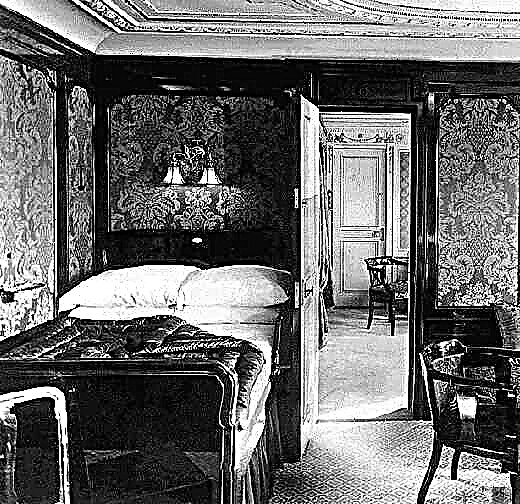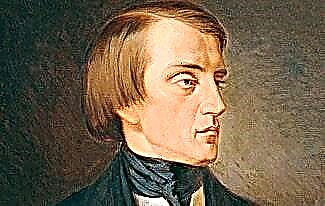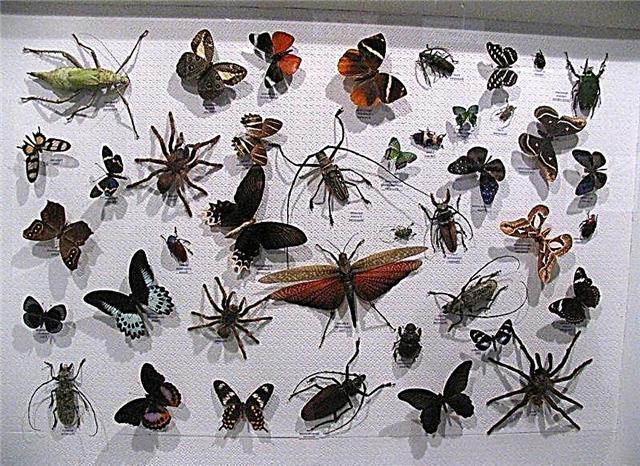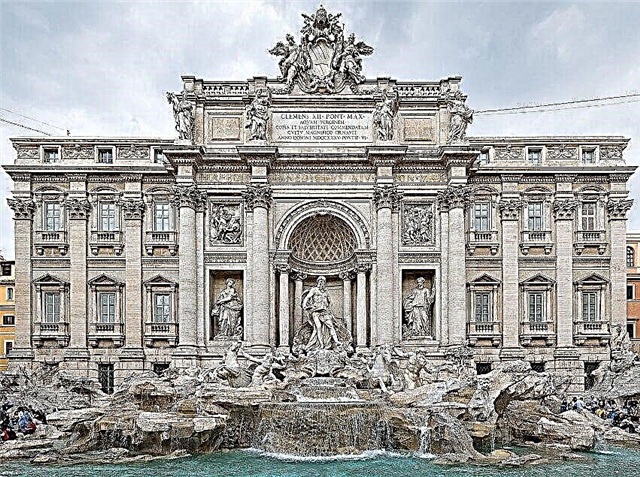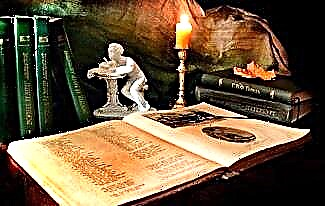The world of flowers is infinitely diverse. A man who created thousands of types of new flowers, without having time to describe the existing ones, added his efforts to the natural variety of blooming beauty. And, like any object or phenomenon that has long accompanied a person, flowers have their own history and mythology, symbolism and legends, interpretations and even politics.

Accordingly, the amount of information available about colors is colossal. You can even talk about one single flower for hours and write in volumes. Without pretending to embrace the immensity, we have included in this collection not the most well-known, but interesting facts and stories related to flowers.
1. As you know, the lily was in France a symbol of royal power. The scepter of the monarchs had a lily-shaped pommel, the flower was depicted on the state flag, military banners and on the state seal. After the Great French Revolution, the new government abolished all the symbols of the state (the new authorities are always most willing to fight with symbols). Lily has disappeared from public use almost completely. She continued to be used only to brand criminals. So, if Milady from the novel "The Three Musketeers" got caught by the revolutionary authorities, the old-regime stigma would not have changed.

The pathetic semblance of modern tattoos was once a royal curse
2. Turner - a fairly extensive family of plants, which includes grasses, shrubs and trees. The family of 10 genera and 120 species is named after the turner flower (sometimes the name “turner” is misused). The flower growing in the Antilles was discovered in the 17th century by the French botanist Charles Plumier. In those years, botanists working in the field were considered a lower caste than the armchair scientists who were engaged in "pure" science. Therefore, Plumier, who almost died in the jungle of the West Indies, as a sign of respect, named the flower he discovered in honor of the “father of English botany” William Turner. Turner's merit before botany in general and English botany in particular was that, without leaving his office, he summarized and combined into one dictionary the names of many plant species in different languages. Charles Plumier named another plant, begonia, after his sponsor, quartermaster (chief) of the fleet, Michel Begon. But Begon, at least, traveled to the West Indies himself and cataloged the plants there, seeing them in front of him. And begonia in Russia since 1812 has been called "Napoleon's ear".

Turner
3. In Australia, New Zealand, Chile and Argentina, an evergreen Aristotelian shrub grows, named after an ancient Greek scientist. The one who named this shrub, apparently, in childhood, was pretty tired of the ancient Greek language or formal logic - the fruits of Aristotelia are terribly sour, although the Chileans even manage to make wine from them. In addition, the fruits of the plant, which bloom in clusters of small white flowers, are good for fever.
4. Napoleon Bonaparte was known to be a lover of violets. But back in 1804, when the emperor's glory had not yet reached its climax, a tree growing in Africa with amazingly beautiful flowers was named in his honor. Napoleon flowers have no petals, but there are three rows of stamens located tightly to each other. Their color changes smoothly from white-yellow at the base to dark red at the top. In addition, there is an artificially bred peony called "Napoleon".
5. As for a Russian patronymic, a second name for a German. In 1870, German scientists Joseph Zuccarini and Philip Siebold, classifying the flora of the Far East, decided to give the name of the Russian Queen of the Netherlands Anna Pavlovna to a popular tree with large pyramidal pale purple flowers. It turned out that the name Anna was already in use. Well, it doesn't matter, the scientists decided. The second name of the recently deceased queen is also nothing, and the tree was named Pawlovnia (later transformed into Paulownia). Apparently, this is a unique case when a plant is named not by name or surname, but by the patronymic of a person. However, Anna Pavlovna deserves such an honor. She lived a long and fruitful life away from Russia, but she never forgot about her homeland, neither as a queen, nor after the death of her husband. Paulownia, on the other hand, is not very well known in Russia, but very popular in Japan, China and North America. The wood is easy to handle and has great strength. A wide range of products from containers to musical instruments is produced from it. And the Japanese believe that for a happy life there should be paulownia products in the house.

Paulownia in bloom
6. At the beginning of the 20th century, the sales of the 500 Parisian flower shops were 60 million francs. The Russian ruble then cost about 3 francs, and the colonel of the Russian army received 320 rubles of salary. The American millionaire Vanderbild, seeing in a flower shop the only, as the saleswoman assured, a rare chrysanthemum in all of Paris, immediately gave 1,500 francs for it. The government, decorating the city for the visit of Emperor Nicholas II, spent about 200,000 francs on flowers. And before the funeral of President Sadi Carnot, the flower-growers grew rich by half a million.
7. Josephine de Beauharnais's love for gardening and botany is immortalized in the name of the Lapagere, a flower that grows only in Chile. The connection between the name of the French empress and the name of the plant is, of course, not obvious. The name was formed from part of her name to marriage - it ended in "de la Pageary". Lapazheria is a vine on which large (up to 10 cm in diameter) red flowers grow. It was discovered at the beginning of the 19th century, and after a few years, Lapazheria was bred in European greenhouses. Due to the shape of the fruit, it is sometimes called the Chilean cucumber.

Lapazheria
8. In honor of the ruler of half of Europe, Charles V of Habsburg, only the thorny bush of carlin was named. Considering the fact that Charles only had more than ten royal crowns, not counting the imperial crown, then the botanical assessment of his role in history looks clearly underestimated.
9. The famous English politician Benjamin Disraeli, once in his youth, seeing on the head of one of the ladies a wreath of primrose flowers, said that these flowers were alive. A former friend of him did not agree and offered a bet. Disraeli won, and the girl gave him a wreath. Since that day, at every meeting, the girl gave the fan a primrose flower. Soon she suddenly died of tuberculosis, and the primrose became a cult flower for the twice Prime Minister of England. Moreover, every year on April 19, the day of the death of the politician, Disraeli's grave is covered with a carpet of primroses. There is also the League of Primroses, which has millions of members.

Primrose
10. The Dutch tulip mania of the 17th century, thanks to the efforts of modern researchers, has turned into a riddle, purer than the mystery of the Bermuda Triangle or the Dyatlov Pass - it seems that a lot of factual data have been collected, but at the same time they do not allow building a consistent version of events and, most importantly, their consequences. Based on the same data, some researchers talk about the complete collapse of the Dutch economy, which followed after the bulb bubble burst. Others argue that the country's economy continued to develop without noticing such a trifle. However, documentary evidence of the exchange of two-story stone houses for three tulip bulbs or the use of bulbs instead of money in wholesale trade deals suggests that the crisis was not in vain even for the wealthy Dutch.
11. In honor of one of the fathers of the British Empire, the founder of Singapore and the conqueror of the island of Java, Stamford Raffles, several plants are named at once. First of all, this is, of course, the famous rafflesia. The huge beautiful flowers were first discovered by an expedition led by the then little-known Captain Raffles. Dr. Joseph Arnold, who discovered the future rafflesia, did not yet know about its properties, and decided to please the boss. As a result, it turned out that in honor of the prominent conductor of the British colonial politician they named a flower that does not have a stem and leaves, leading an exclusively parasitic life. Perhaps, naming other plants by the name of Sir Stamford: Raffles Alpinia, Nepentes Raffles and Raffles Dyschidia, they tried to smooth out such a negative association of the parasite flower with colonial politics.

Rafflesia can be up to 1 meter in diameter
12. During the reign of the Russian Emperor Nicholas I, General Klingen received the highest order to escort Empress Maria Feodorovna to Tsarskoe Selo. While the empress was staying in her chambers, the general, faithful to his official duty, went to inspect the posts. The guardsmen carried out service with dignity, but the general was surprised by the sentry, who was guarding an apparently empty space in the park, far from the benches and even trees. Klingen tried in vain to get any explanation until he left back to St. Petersburg. Only there, from one of the veterans, he learned that the post had been ordered by Catherine II to guard a very beautiful rose intended for her grandson. Mother Empress forgot about the post the next day, and the servicemen pulled the strap on it for another good 30 years.
13. The flower of the Pushkinia family is not named after the great Russian poet. In 1802 - 1803 a large expedition worked in the Caucasus, exploring the nature and bowels of the region. The head of the expedition was Count A. A. Musin-Pushkin. Biologist Mikhail Adams, who was the first to discover an unusual snowdrop with an unpleasant odor, named it after the leader of the expedition (is there some negative connotation here too?). Count Musin-Pushkin acquired a flower of his name, and upon his return, Empress Maria Feodorovna presented a ring to Adams.

Pushkinia
14. For several years in a row, the flower market in Russia in monetary terms has fluctuated in the region of 2.6-2.7 billion dollars. These figures do not include illegal imports and flowers that are grown in households. The average price of one flower in the country is about 100 rubles, with an almost twofold variation between Crimea and the Far East.
15. In 1834, one of the greatest botanists in history, Augustin Decandol, classifying the Brazilian cactus with red flowers, decided to name it after the famous English traveler and mathematician Thomas Harriott. In honor of the inventor of the mathematical signs "more" and "less" and the first supplier of potatoes to Great Britain, the cactus was named hariot. But since Decandol named more than 15,000 plant species during his career, it is not surprising that he took the name already used (was not Decandol one of the prototypes of the scattered geographer Paganel?). I had to make an anagram, and the cactus got a new name - hatiora.
16. The inscription “The Netherlands” on the flower box does not mean that the flowers in the box were grown in Holland. Almost two thirds of the transactions in the global flower market go through the Royal Flora Holland exchange every year. Products from South America, Asia and Africa are virtually traded on the Dutch flower exchange and then resold to developed countries.
17. American botanists brothers Bartram in 1765 discovered in the state of Georgia an unknown pyramidal tree with white and yellow flowers. The brothers planted seeds in their native Philadelphia, and when the trees sprouted, they named them after Benjamin Franklin, a great friend of their father. At that time, Franklin, still far from world fame, was just the postmaster of the North American colonies. The brothers managed to plant the Franklinia on time - intensive plowing of the land and the development of agriculture led to the fact that after a couple of decades the tree became an endangered species, and since 1803, the Franklinia can be seen only in botanical gardens.

Franklinia flower
18. Muslims attribute the purifying power of the rose. Having captured Jerusalem in 1189, Sultan Saladin ordered to completely wash the mosque of Omar, turned into a church, with rose water. In order to deliver the required amount of rose water from the area where the roses grow, it took 500 camels. Mohammed II, who seized Constantinople in 1453, similarly cleansed the Hagia Sophia before turning it into a mosque. Since then, in Turkey, newborns have been showered with rose petals or wrapped in a thin pink cloth.
19. Cypress Fitzroy was named in honor of the famous "Beagle" captain Robert Fitzroy. However, the valiant captain was not a botanist and the cypress was discovered long before the Beagle approached the shores of South America in 1831. The Spaniards called this valuable tree, almost completely cut down by the end of the 20th century, “alerse” or “Patagonian cypress” back in the 17th century.

Such a cypress can grow for thousands of years.
20. The War of the Scarlet and White Roses in England, which lasted for 30 years in the second half of the 15th century, has nothing to do with flowers. The whole drama with the choice of rose colors for family crests was invented by William Shakespeare. In fact, the English nobility fought for the throne of the king for several decades, supporting either the Lancaster family or the York family. The scarlet and white Rose on the coat of arms of the rulers of England, according to Shakespeare, was united by the mentally ill Henry VI. After him, the war continued for many years, until the illegitimate Lancaster Henry VI I unified the tired country and became the founder of a new Tudor dynasty.
21. In view of the easy crossbreeding of orchids, it would be too long to list their species, named after some outstanding people. It is worth noting, perhaps, that a wild species of orchid was named in honor of Mikhail Gorbachev. Lower-ranked characters like Jackie Chan, Elton John, Ricky Martin, or Frida Giannini, creative director of Gucci, have to settle for artificial hybrids. Giannini, however, was not upset: she immediately released a collection of 88 bags with the image of “her” orchid, each costing several thousand euros. And the American Clint McAid, having developed a new variety, first named it after Joseph Stalin, and then for several years asked the Royal Society for the Registration of Names to change the name of the orchid to General Patton.

Elton John with a personalized orchid
22. The flower wars that took place in the Maya and Aztec states in the XIV century were not, in the full sense of the word, either flower or wars. In the modern civilized world, these competitions would most likely be called prisoner-capturing tournaments, held according to certain regulations, in several circles. The rulers of the participating cities persuaded in advance that there would be no robberies or murders. Young people will go out into the open field and fight a little, taking prisoners. Those, according to custom, are executed, and after an agreed time everything will repeat. This method of extermination of the passionate part of the youth must have really liked the Spaniards, who appeared on the continent 200 years later.
23. According to ancient Greek mythology, carnations appeared after the goddess Diana, returning from an unsuccessful hunt, tore out the eyes of an inopportune shepherd and threw them on the ground. At the place where the eyes fell, two red flowers grew. So carnations are a symbol of protest against the arbitrariness of those in power. The carnation was actively used by both sides during the years of the French Revolution, and then it gradually became a universal symbol of courage and courage.

Diana. This time, apparently, the hunt was successful
24. The Russian Empress Maria Feodorovna, nee a Prussian princess Charlotte, had an addiction to cornflowers since childhood. According to the family belief, it was cornflowers that helped her homeland to recover after the defeat by Napoleon and the loss of half of the land.When the empress found out that the outstanding fabulist Ivan Krylov had a stroke and was dying, she sent the patient a bouquet of cornflowers and offered to live in the royal palace. Krylov miraculously recovered and wrote the fable "Cornflower", in which he portrayed himself as a broken flower, and the empress as a life-giving sun.
25. Despite the fact that flowers are quite popular in heraldry, and most countries have national flowers, flowers are very scarce in official state symbols. The Hong Kong orchid, or bauhinia, adorns the coat of arms of Hong Kong, and on the Mexican national flag the cactus is depicted in bloom. The coat of arms of the South American state of Guyana depicts a lily, and the coat of arms of Nepal is decorated with mallow.

Gokong flag


